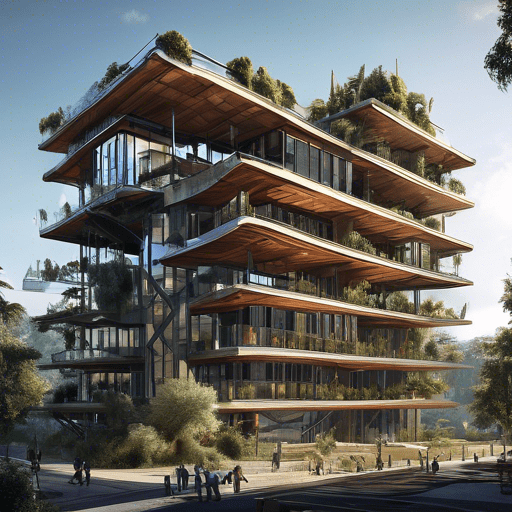Introduction
Structural engineering is a critical field in the construction industry, shaping the skyline of cities and ensuring the safety of buildings. In California, a state renowned for its diverse landscapes and seismic activity, the role of structural engineers takes on even greater significance. From towering skyscrapers in downtown Los Angeles to resilient coastal homes, structural engineers in California face unique challenges and opportunities. This article delves into the loads that structural engineers need to consider when designing buildings in California, the threads they must address, and the factors that contribute to their decision-making process.
Loads in Structural Engineering
Structural engineers in California must account for a variety of loads that can affect the stability and integrity of buildings. These loads are categorized into two main types: dead loads and live loads.
- Dead Loads: Dead loads refer to the constant, permanent forces acting on a structure, including the weight of the building materials themselves, as well as fixtures and finishes. For instance, concrete floors, steel beams, and roofing materials all contribute to the dead load. In California, where seismic activity is a concern, proper calculation and distribution of dead loads are crucial to maintaining structural stability during earthquakes.
- Live Loads: Live loads are transient forces exerted on a structure, resulting from occupants, furniture, equipment, and environmental factors. In a state like California, where innovation and technology thrive, buildings often house advanced equipment, necessitating accurate live load calculations. Engineers must anticipate dynamic variations in live loads and design structures to safely accommodate them.
Seismic Loads: A Major Consideration
California’s susceptibility to earthquakes makes seismic loads a paramount consideration in structural engineering. The state is located along the Pacific Ring of Fire, a region known for its seismic activity. Structural engineers must design buildings that can withstand ground motion caused by earthquakes of varying magnitudes.
To address this, California follows strict building codes, such as the California Building Code (CBC) and the Structural Engineers Association of California (SEAOC) standards. These codes provide guidelines for designing structures that can absorb seismic forces through mechanisms like base isolators and dampers. Incorporating such features is essential to minimizing the potential for collapse and ensuring the safety of occupants during seismic events.
Threads and Challenges in California Structural Engineering
Structural engineers in California face several threads and challenges unique to the region:
- Seismic Vulnerability: As previously mentioned, seismic vulnerability is a major thread in California. Engineers must consider the impact of ground motion on buildings and design structures that can withstand various levels of seismic activity.
- Wildfires: California is prone to wildfires, particularly in its wildland-urban interface areas. Structural engineers must incorporate fire-resistant materials, design firebreaks, and develop evacuation plans to enhance building safety.
- Changing Climate: The changing climate brings with it challenges like rising sea levels and increased storm intensity. Structural engineers need to anticipate the effects of climate change and design structures that are resilient to these changing conditions.
- Population Density: Urban centers in California often have high population densities. Structural engineers must design buildings that are not only safe but also efficient in terms of space utilization and vertical expansion.
- Aesthetics and Innovation: California is a hub for architectural innovation and creativity. Structural engineers must balance the demand for aesthetically pleasing structures with functional and safe designs.
Factors Considered by Structural Engineers
Structural engineers in California must take a holistic approach to their work, considering multiple factors to ensure the safety and longevity of structures:
- Material Selection: Engineers must choose materials that can withstand seismic activity, fire, and other environmental challenges. Steel, reinforced concrete, and advanced composite materials are commonly used in seismic-resistant designs.
- Building Configuration: The layout and configuration of a building can impact its structural integrity. Engineers must consider load distribution, symmetry, and redundancy in the event of partial damage.
- Foundation Design: California’s diverse geology requires tailored foundation designs. Engineers analyze soil properties and seismic data to determine the appropriate foundation type, ensuring stability during earthquakes.
- Seismic Analysis: Engineers conduct sophisticated seismic analyses to understand how a building will respond to ground motion. These analyses inform decisions about damping systems, bracing, and other seismic-resistant features.
- Code Compliance: Adhering to building codes is a top priority for structural engineers. Compliance ensures that structures are designed and constructed to withstand various loads and hazards.
Conclusion
Structural engineering in California is a dynamic field that demands meticulous attention to detail, innovation, and a deep understanding of the region’s unique challenges. From the relentless seismic forces to the evolving climate and population trends, structural engineers play a pivotal role in shaping the state’s built environment. By considering diverse loads, adhering to stringent codes, and incorporating cutting-edge solutions, these professionals ensure that California’s structures stand strong, secure, and resilient for generations to come.

About Author
InnoDez